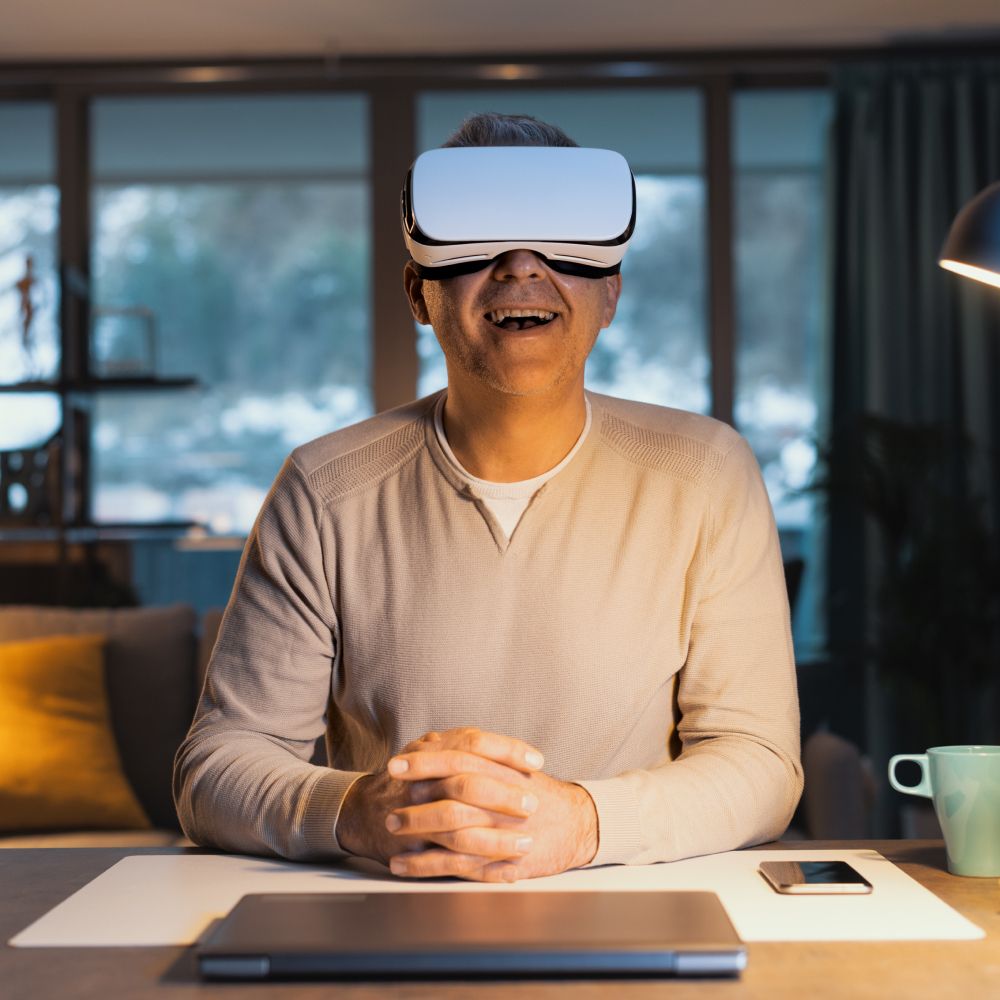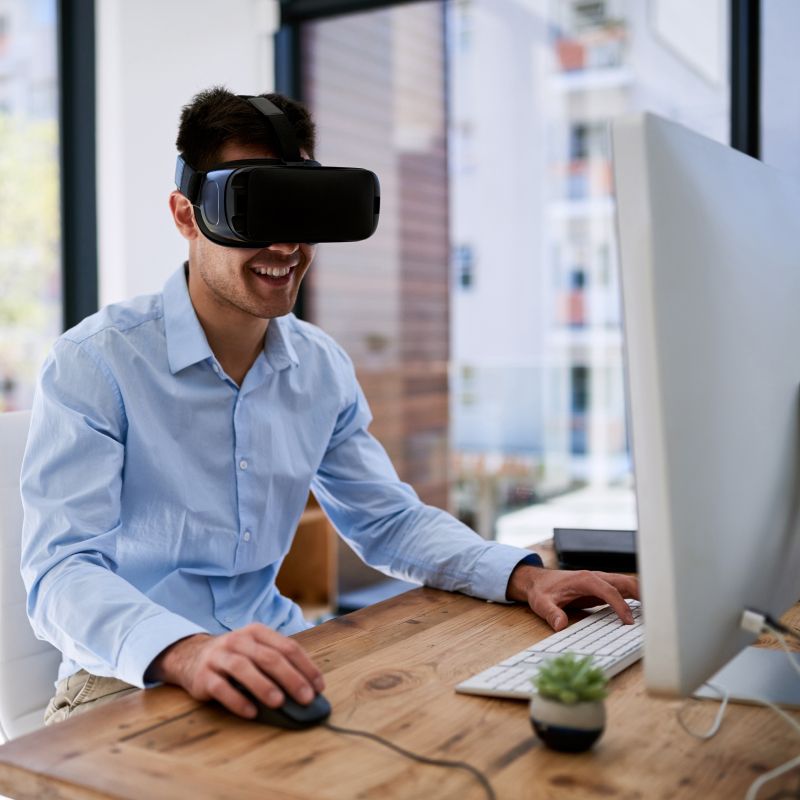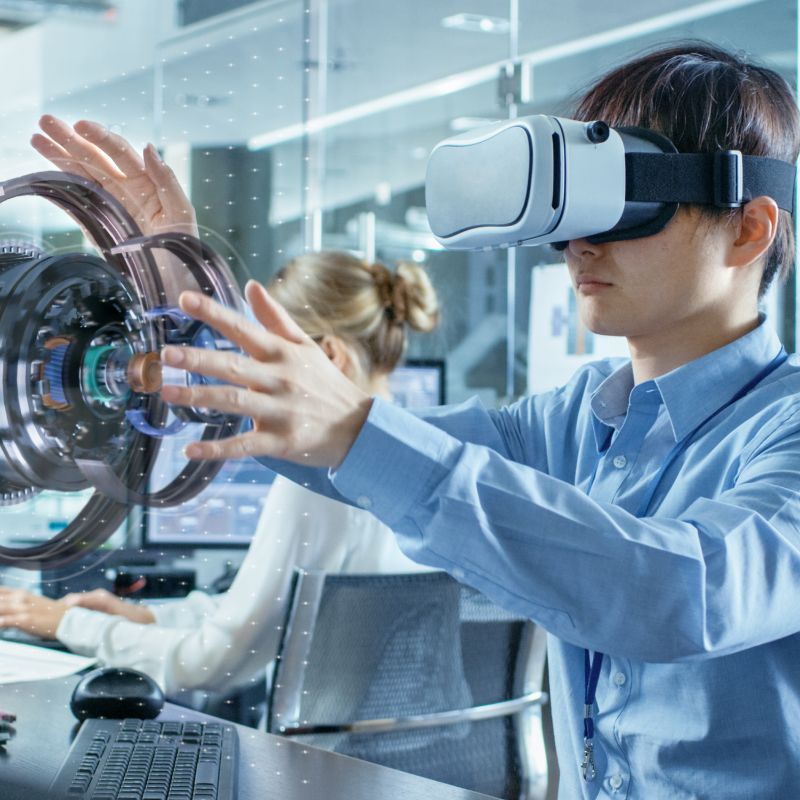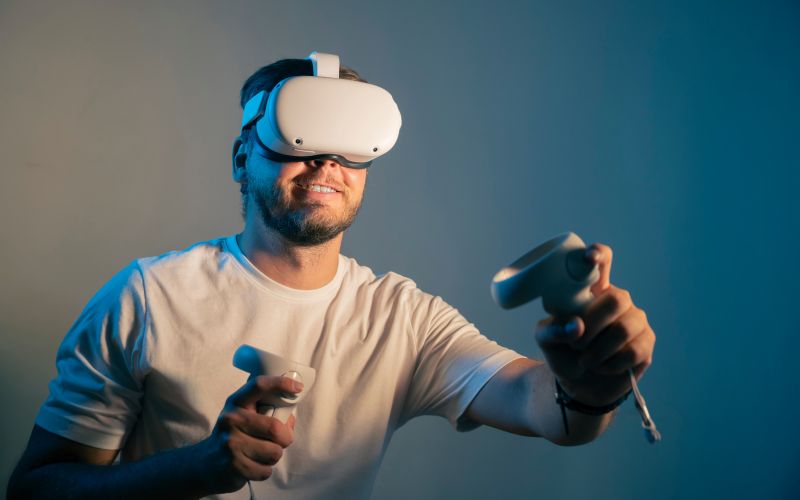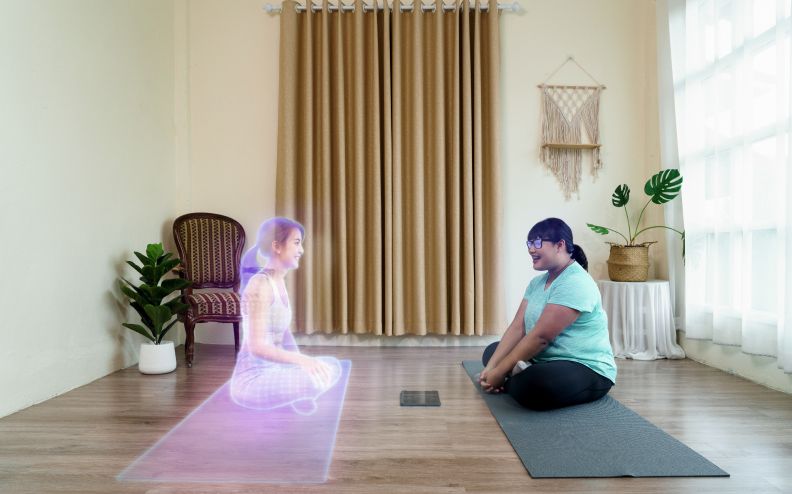XR’s objective is to enable contact with different levels of virtual world building while solving several real-world challenges. This technology has the potential to transform processes and workflows, from more efficient employee training to close-to-real-life digital social interactions within the metaverse.
To function, XR leverages hardware devices including special cameras, sensors, smartphones, and headsets like the HTC Vive or the Oculus Quest 2. AI -enhanced features enable the acquisition of the necessary data on the real-life environments to produce a virtual overlay (in the case of Augmented Reality and Mixed Reality), or to create an entire virtual world on top of it (in the case of Virtual Reality).
Types of Extended Reality
There are three Extended Reality ramifications: Virtual Reality (VR), Augmented Reality (AR) and Mixed Reality (MR). These three sub-technology domains provide distinct experiences with different levels of virtual immersion.
Virtual Reality
Virtual reality is the most immersive technology within XR. It consists of a journey that is set in a completely virtual world, with little to no presence of any elements of our concrete reality. It leverages VR headset devices like the HTC Vive or Oculus Quest 2. As virtual reality offers a revolutionary interface to enter a virtual world, it represents a critical technology to experience the metaverse and specific business-related workflows disruptions.
Augmented Reality
Augmented reality is a technology that overlays virtual objects within real-life environments, blending the virtual environment with the real one. It is experienced via smartphones or tablets. The overall simplicity to access AR apps is one of the critical factors in the mass growing adoption of this technology within the public. The most famous example of this type of technology applied on a large scale is the mobile game Pokémon GO. This technology has been adopted in the sports industry for entertainment purposes, in industrial setting for on-the-job training and more.
Mixed Reality
Mixed reality (MR) blends features of Virtual reality and augmented reality. It provides users with a virtual experience that is still attached to elements of the real-world but provides additional immersion by enabling the virtual and real elements to interact with each other. MR and AR are very similar, however, while both offer virtual overlays to the real-world, Mixed Reality allows for a combination of real and virtual that creates its own world, rich of holographic content and multiple interactivity features. Mixed reality requires users to adopt specific wearable devices like Microsoft’s Hololens-2.
Popular Use Cases of XR
XR applications are growing at significant speed, while creating disruption across industries and workflows.
Employee Training
All three types of XR can be used to create virtual training environments that can be accessed remotely and can save companies money and time. Virtual training also allows for real-time support applications and assists employees in high-risk situations.
Gaming
AR and VR especially, deliver fun and engaging experiences. Games that integrate a mix of virtual characters and elements of the real world with AR are receiving a lot of attention from the public in recent years. VR games are also revolutionizing how gamers perceive virtual worlds.
Marketing and Customer Experience
AR enables customers to try clothes virtually or to see how a certain piece of furniture would look like in their living room. AR apps are also being used to deliver advertising information for business, via smartphone or tablet.
Metaverse
AR and especially VR are big propellers of the metaverse experience. XR applications are the gateway to experience metaverse worlds immersively, allowing great interactivity within the virtual world.
Takeaway
XR applications are evolving at an impressive pace, however there are factors that can get in the way of a broader implementation of the technology itself. Businesses must consider topics like cost, privacy issues and excessive social distancing when planning their XR strategy. As managers plan their strategic agenda, it is critical to partner with global XR providers that can assist them in their strategic rationale.
